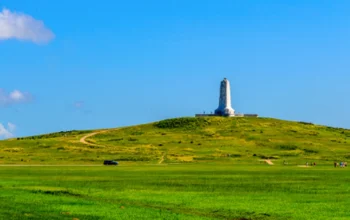Gorgeous Live Views with Ocracoke Island Webcams feature beautiful streaming from key areas like Silver Lake Harbor, Teach’s Hole, and Harbor Dock.
Discover the Beauty of Ocracoke Island Webcams
See Ocracoke Island in Real-Time
Ocracoke Island webcams offer a unique and beautiful way to experience this coastal gem from anywhere in the world. Whether you’re planning a visit, checking the weather, or just daydreaming of ocean breezes, these webcams deliver live scenes all day long. Located off the coast of North Carolina, Ocracoke is known for its charming village, peaceful beaches, and rich maritime history. Thanks to several webcams across the island, you can view stunning scenery anytime with a single click.
Why Watch Ocracoke Island Webcams?
Live webcams give you instant access to the island’s current weather, light, and activity. These cameras are especially helpful for travelers who want to see real-time conditions before heading out. Locals also use them to check for ferry lines, tides, or even upcoming storms. For many, the webcams simply bring peace. Watching boats pass through the harbor or waves roll up on the shore can be incredibly calming.
The webcams cover multiple areas across the island. They offer wide views of the harbor, local streets, and shoreline. Each camera gives you a different perspective, showing Ocracoke’s beauty from many angles. The cameras refresh regularly, often providing high-definition quality images.
Ocracoke Island: From Ancient Roots to Coastal Living
Early Inhabitants and Coastal Life
Long before European explorers sailed the Atlantic, Native people lived on Ocracoke Island. They used the land and water to survive. In fact, they built canoes from trees, gathered oysters, and fished in the shallow sounds. The natives moved with the seasons, always in rhythm with nature. Their knowledge of the coast helped them live well on the barrier islands.
These early residents left behind tools, shells, and signs of small camps. Today, researchers still study those clues to learn how life worked before modern history began.
The Arrival of Sailors and Settlers
European explorers arrived in the 1500s. Ships passed by the island on their way to new colonies. The inlet near Ocracoke became a known path for sailors. By the early 1700s, the island gained a dark legend. Blackbeard, the famous pirate, made it his hiding place. In 1718, he died in battle near Ocracoke. His story lives on in books and local tales.
Soon after, people began to settle on the island. They built homes, raised animals, and fished the same waters the early people once did. The island remained remote. Life was simple but often hard.
A Growing Village and Maritime Work
Through the 1800s, the population stayed small. Most people worked as fishermen, boat builders, or ship pilots. They guided large ships through Ocracoke Inlet, which was tricky and dangerous. Their skills saved lives and cargo.
In time, the village took shape. Wooden homes, schools, and churches appeared. People traveled by foot, boat, or cart. The ocean still controlled daily life, from weather to work.
War and Defense on the Coast
During World War II, the U.S. Navy built a base on Ocracoke. Soldiers trained there, and patrol boats guarded the coast. German submarines had been spotted off the Outer Banks. Ocracoke played a small but important role in protecting the country. After the war, the base closed, but its history remains.
Life on Ocracoke Today
Now, Ocracoke Island is peaceful. People visit for its calm beaches, slow pace, and natural beauty. Ferries carry guests from the mainland. Some stay for a day. Others return year after year.
The village still values its past. Locals run small shops, rent cottages, and fish the same waters as their ancestors. History is everywhere—from the old lighthouse to the quiet paths through the woods. Though time has passed, the spirit of Ocracoke remains strong.
Ocracoke Island, while peaceful and remote, is part of a larger chain of coastal destinations that offer visitors a wide range of experiences just a short trip away. To the north, Duck provides a charming, upscale vibe with its scenic boardwalk along the Currituck Sound, boutique shops, and quiet beaches—reached in about four to five hours via ferry and Highway 12.
Slightly closer, Nags Head offers classic beach town attractions including long sandy shores, fishing piers, and the famous Jockey’s Ridge State Park, home to the East Coast’s tallest sand dunes.
Just a few miles beyond Nags Head lies Kill Devil Hills, rich with aviation history as the site of the Wright brothers’ first powered flight, now marked by a national memorial. Each town is accessible by taking the ferry from Ocracoke to Hatteras and continuing north by car, making them ideal for day trips or short getaways. These destinations differ in feel but all share the Outer Banks’ natural beauty, making Ocracoke a perfect starting point for exploring this unique stretch of North Carolina’s coast.


